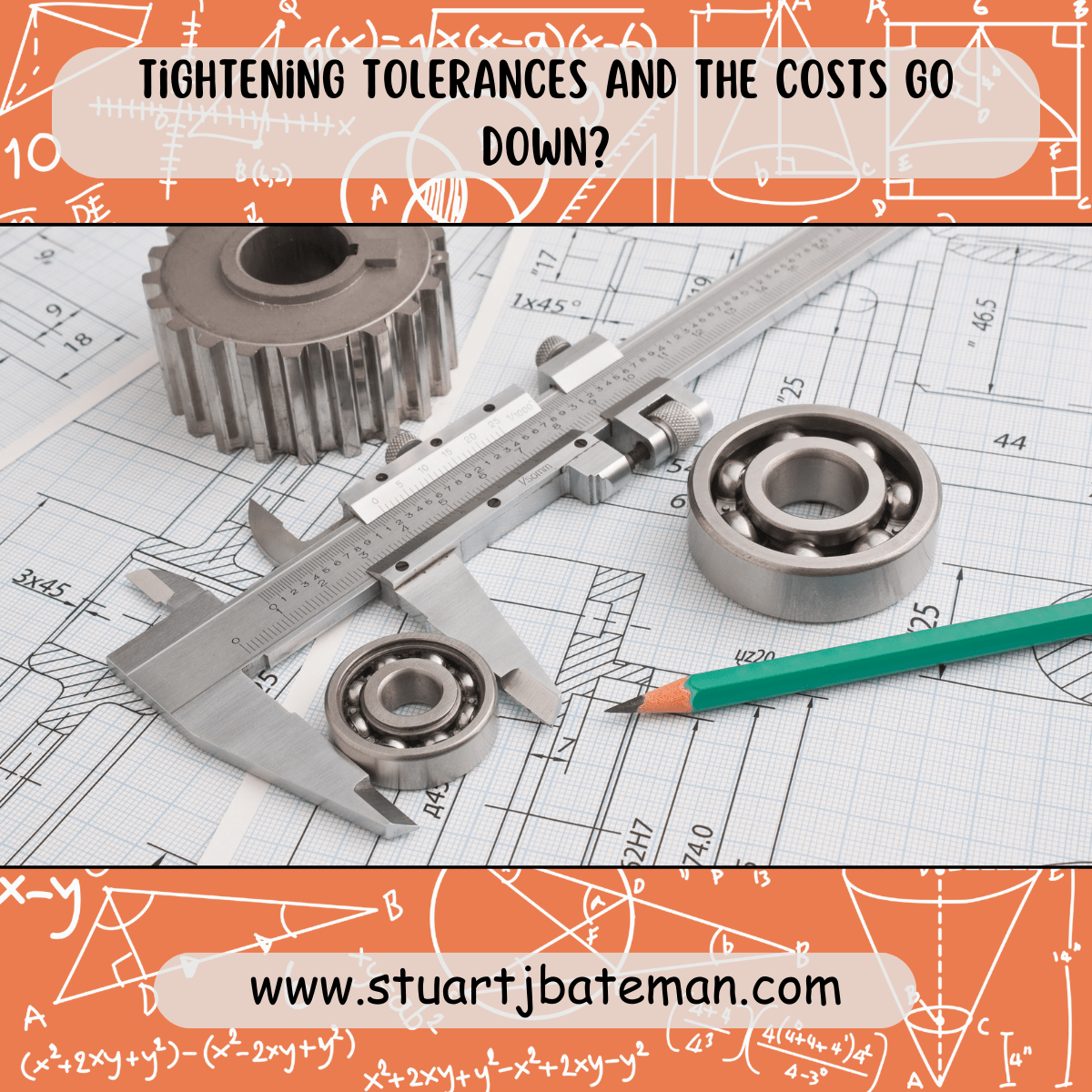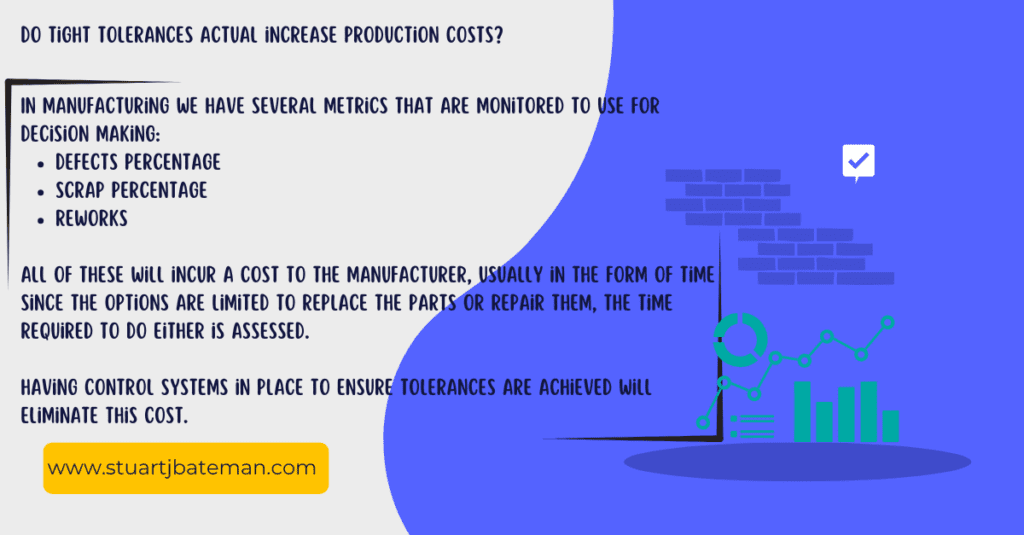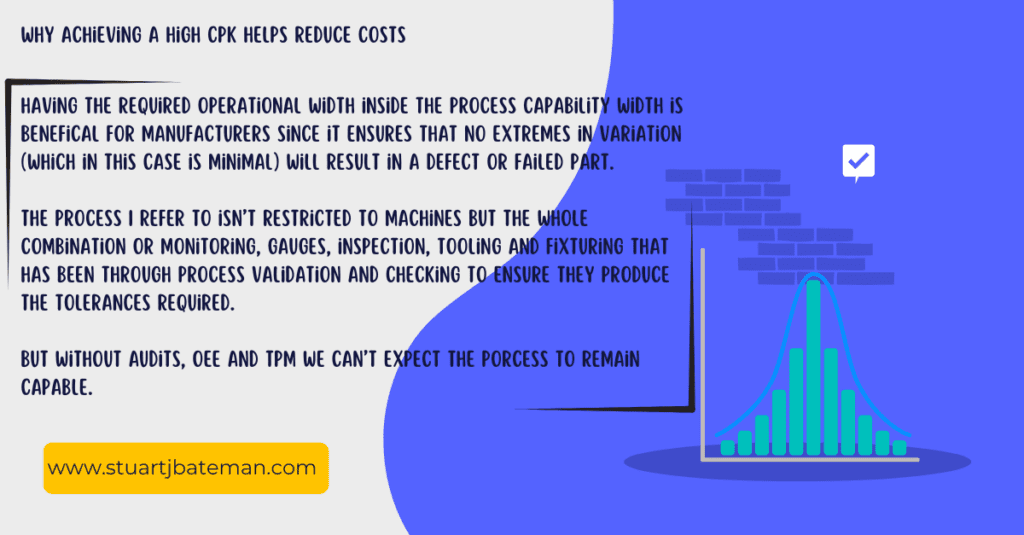Tightening tolerances and the costs go down?
A good engineer is a person who makes a design that works with as few ideas as possible.

Why Tightening Tolerances Can Reduce Costs in the Long Run
Ten years ago, this concept of tightening tolerances to reduce costs was new to me. However, after implementing it multiple times, I began to understand why it seemed so counterintuitive.
It sounds crazy, but if you tighten your tolerances, your initial expenditure increases as you invest in a capable process. However, over time, your costs go down due to reduced defects and rework. Think about it for a minute—eliminating quality issues at the source prevents expensive corrections later in the process.

That said, I’m not suggesting you rush into manufacturing tomorrow and tighten all tolerances indiscriminately. Instead, you need to evaluate each part carefully.
- Critical-to-function and safety-critical dimensions must be tightly controlled, requiring precise measurement systems and robust mitigation strategies.
- Non-critical dimensions don’t pose a direct risk to functionality or safety and can have standard or relaxed tolerances, reducing unnecessary costs.
The Common Misconception About Relaxing Tolerances
Many believe that relaxing tolerances reduces production costs because it requires less advanced technology and fewer process controls. While this is true in some cases, the hidden costs of defects, rework, and inconsistencies can quickly outweigh these savings.
If you want a dimension to meet specifications consistently, you must employ the right methods, from training staff to investing in equipment capable of achieving the required precision. The upfront costs—time, money, and resources—are what deter many manufacturers. However, achieving a CPK (Process Capability Index) level of 1.66 (the ratio between required operation width and the actual process width the process can produce) ensures that processes are robust and require minimal intervention.
At that 1.66 CPk we start getting closer to that fabled 3.4 defects in 1 million (DPMO), at this level depending on the volume you produce you may either see this regularly for which you can mitigate with the processes below, or will never see it in 30 years.

This must be supported by Overall Equipment Effectiveness (OEE) and Total Productive Maintenance (TPM) to keep manufacturing equipment in peak condition. While these require investment, the cost of failures due to poor tolerances is often far higher.
Methods for Controlling Tolerances in Manufacturing
To maintain tightening tolerances efficiently, consider the following approaches:
1. Process Control Methods
- Statistical Process Control (SPC): Uses real-time monitoring and data analysis to detect and correct deviations.
- Six Sigma Techniques: Reduces variation through data-driven process improvements.
- Error-Proofing (Poka-Yoke): Incorporates design features that prevent incorrect assembly or production errors.
Link to YouTube videos on SPC: Lean Vlog
2. Advanced Manufacturing Techniques
- Precision Machining & Grinding: Ensures high accuracy in critical components.
- Additive Manufacturing (3D Printing): Allows for controlled, layer-by-layer production with tight tolerances.
- Automated Gauging & Feedback Systems: Real-time measurement and process adjustments to maintain tolerances.
Link to YouTube video on Feedback systems: IT and Automation Academy
3. Material Selection & Treatment
- Thermal Expansion Considerations: Designing tolerances based on expected material behaviour under operational conditions.
- Surface Treatments & Coatings: Reduce wear and maintain dimensional integrity over time.
Link to YouTube video on Material selection: Advanced Metallic System CDT
4. Supplier & Manufacturing Alignment
- Design for Manufacturability (DFM): Collaborate with manufacturers early to ensure achievable tolerances.
- Supplier Quality Agreements: Establish strict requirements to maintain tolerance consistency across the supply chain.
Link to YouTube video on DFM: Protolabs
How to Decide Whether a Tolerance Should Be Tightened
The key is to evaluate the product’s intended use and assess the risks of failure. Here are some essential questions to guide this decision:
Functionality & Safety Considerations
- What happens if this dimension is out of tolerance?
- Does this part interact with other components in a way that requires precision?
- Will failure cause safety risks or product malfunction?
Manufacturing Feasibility
- Can existing equipment consistently achieve this tolerance?
- Do we have the right measurement systems in place?
- Will tightening this tolerance significantly increase production costs?
Long-Term Performance
- Is this component exposed to wear, temperature changes, or high loads?
- Will a tighter tolerance extend the product’s lifespan or reliability?
- Can we justify the additional cost through fewer defects and rework?
Customer & Industry Standards
- Does this dimension impact regulatory compliance?
- Are competitors achieving tighter tolerances, providing better quality?
My Thoughts on tightening tolerances
Choosing the right tolerances is a balancing act between cost, manufacturability, and product reliability. While tightening tolerances require upfront investment, they often lead to long-term savings by reducing defects, rework, and failures. By leveraging advanced manufacturing techniques and robust process controls, manufacturers can achieve high-quality production with fewer inefficiencies.
Would you rather pay for quality upfront or deal with expensive failures later? The answer should be clear.



What are your thoughts? Have I covered everything or is there more you know and would like to share?
I’m always learning and improving this site and my blogs, so please feel free to get in touch with me via LinkedIn or this site to discuss any topics I have covered.
If you’re having trouble finding ways to progress check out these sites filled with free learning tools:

